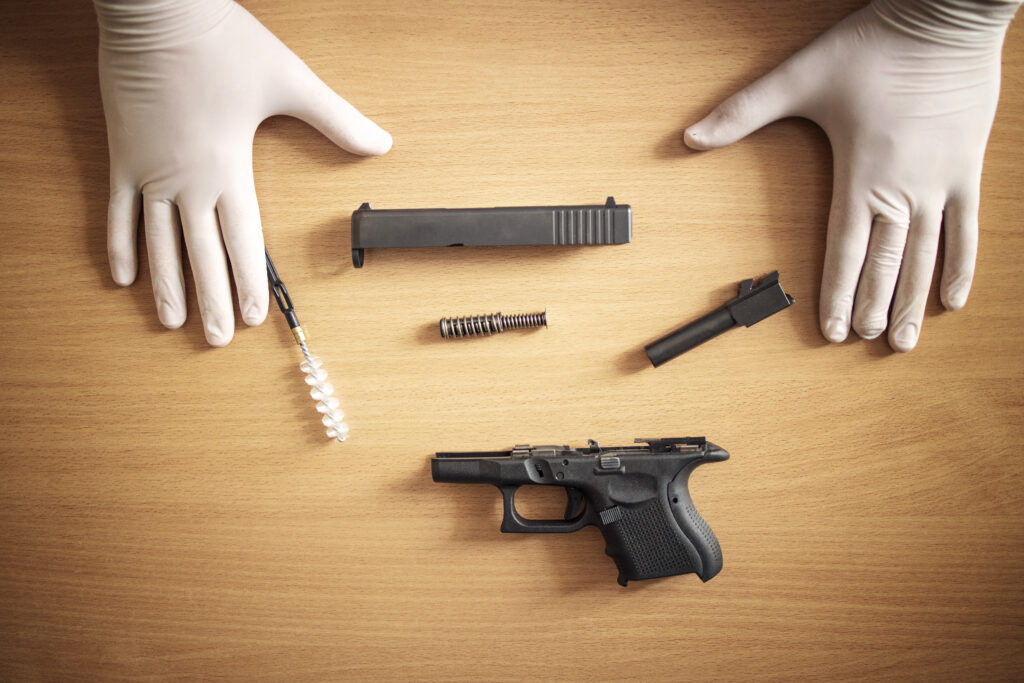A strange thing happens when darkness fills a home. Every sound feels louder, every shadow sharper. In that uneasy moment, clarity matters more than confidence. That’s where proper illumination — the right gun lights and lasers — becomes less of an accessory and more of a lifeline. Among the best gun accessories available today, lights and lasers hold a unique role: they bridge the gap between uncertainty and control.
Why Lighting Is Everything in Home Defense
Low-light environments aren’t just dark — they’re deceptive. Eyes adjust slowly, shapes distort, and the brain starts filling in gaps that may not exist. A high-quality weapon-mounted light eliminates that guessing game, revealing what’s real before a mistake happens.
A good light doesn’t just illuminate. It controls space. The beam pattern, intensity, and placement dictate how the user perceives movement and distance. Too narrow, and blind spots form. Too wide, and it washes out fine detail. The best designs balance both — a sharp central hotspot for precision, surrounded by softer spill light to track peripheral movement.
There’s also the psychological factor. A sudden flash of 1000 lumens in a dark room can freeze an intruder mid-step. It disorients, disrupts, and buys precious seconds — something a silent homeowner values more than words can describe.

Lasers: Guidance, Not a Crutch
Laser sights have always divided opinion. Some claim they’re a distraction, others swear by them. Both are partly right. A laser isn’t meant to replace skill or training; it’s a supplement — a cue under pressure.
In a high-stress encounter, fine motor control deteriorates. That’s biology, not weakness. A visible red or green laser compensates for that, giving a quick visual reference when lining up traditional sights isn’t feasible. Red lasers excel indoors — less glare, better battery life. Green lasers, on the other hand, remain visible in brighter conditions and longer distances.
The trick lies in discipline. A constantly visible beam gives away position, while a momentary activation switch keeps things discreet. The goal is precision, not a laser show.
Choosing Between Lights, Lasers, or Both
Here’s where things get interesting. Many modern firearm enthusiasts now prefer combination units — integrated systems that house both light and laser. These hybrid setups offer immediate adaptability: light for identification, laser for alignment. The key is ergonomics. Controls should be intuitive, reachable without shifting grip.
Some shooters still opt for separate devices, usually for modularity. Swapping a light between rifles or handguns is easier when it’s independent. Others stick to minimalist setups, preferring lighter frames with just a laser. None are wrong; it’s a matter of context.
What defines a “good” choice depends on usage. Home-defense situations often occur at close range — within a few yards. In such cases, a high-lumen flood beam paired with a visible laser provides both situational awareness and targeting assistance.
Quality Matters More Than Features
There’s an old saying: cheap gear costs more in the long run. Lights and lasers are no exception. Durability, battery life, and mounting integrity matter more than extra buttons or adjustable strobes. A $60 unit that flickers under recoil can turn from asset to liability in seconds.
Reputable brands prioritize simplicity — single-mode activation, sealed housings, and solid recoil resistance. Aluminum or polymer housings keep weight balanced, while waterproofing ensures reliability in unpredictable conditions. The focus should always be reliability over novelty.
And brightness? It’s not a competition. A 500-lumen light with a defined hotspot might outperform a blinding 2000-lumen unit that scatters light everywhere. Efficiency trumps raw numbers.
The Human Element Behind the Hardware
No accessory compensates for poor judgment or lack of familiarity. A well-trained shooter using mid-range gear will always outperform an unprepared one with high-end tech. That’s not theory — it’s repeatedly proven on every range and in every defensive encounter studied.
Training in low-light conditions, learning activation patterns by muscle memory, and practicing situational control make more difference than lumens or laser color. Accessories enhance skill; they don’t create it.
Finding the Right Fit for Every Platform
Different firearms demand different setups. Compact pistols often benefit from shorter, low-profile lights, while full-size models handle combination systems easily. Rail compatibility is key — especially when pairing lights or lasers with an ak handgun or similar platforms that vary in rail design and space constraints.
Versatility matters. The goal is integration without bulk, clarity without clutter. Every ounce and inch matters in home defense scenarios where movement is confined and reactions must be instinctive.
Final Thoughts
A gun light or laser isn’t about looking tactical; it’s about acting decisively in the dark. The difference between chaos and control often comes down to visibility — literal and mental. The best setups aren’t the flashiest or the most expensive; they’re the ones that work when hands are shaking and seconds count.
Ever notice how the quiet confidence of preparation feels different from bravado? That’s the essence of home defense. Practical tools, steady hands, and clear sightlines — a trio that speaks louder than any lumen count ever could.




